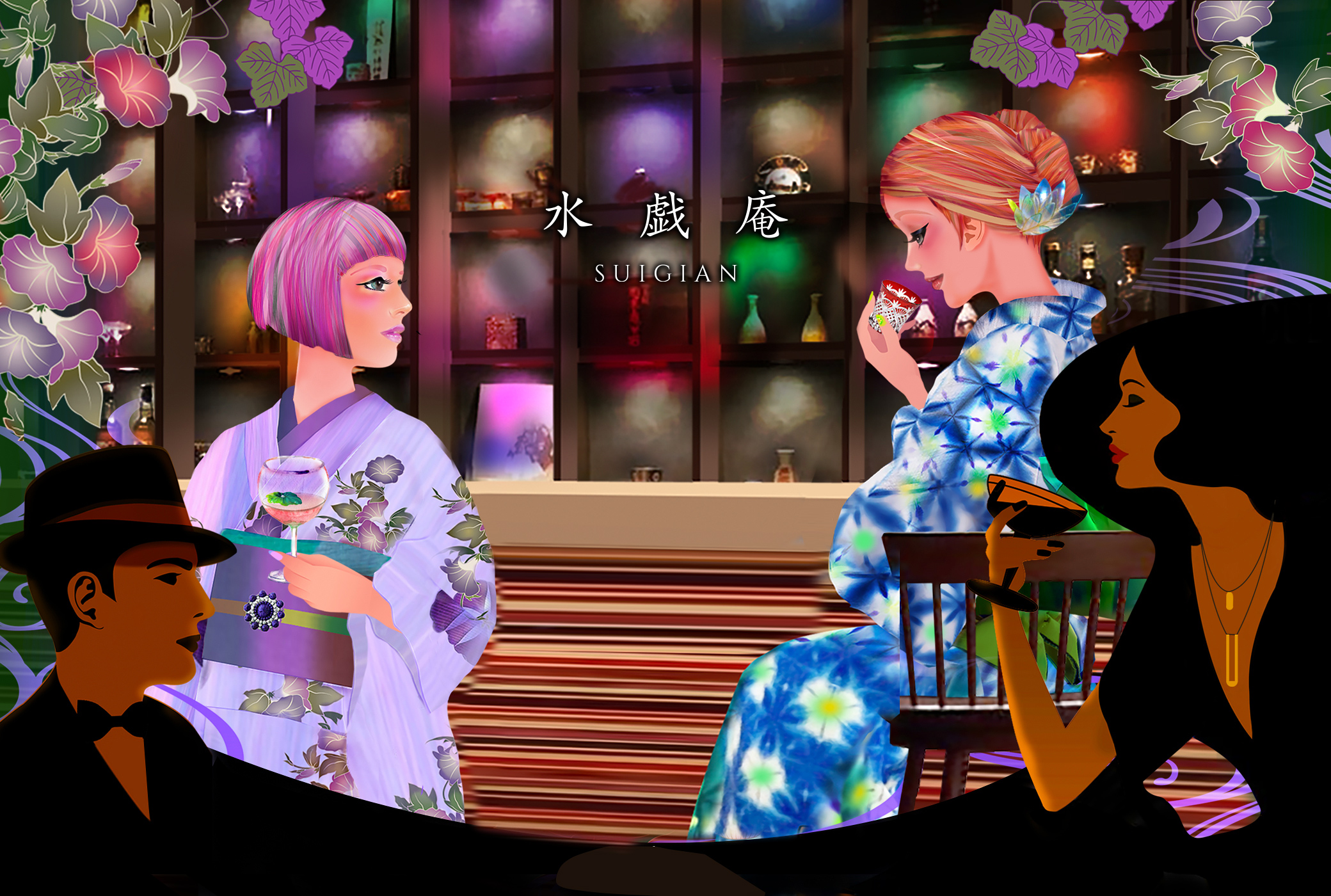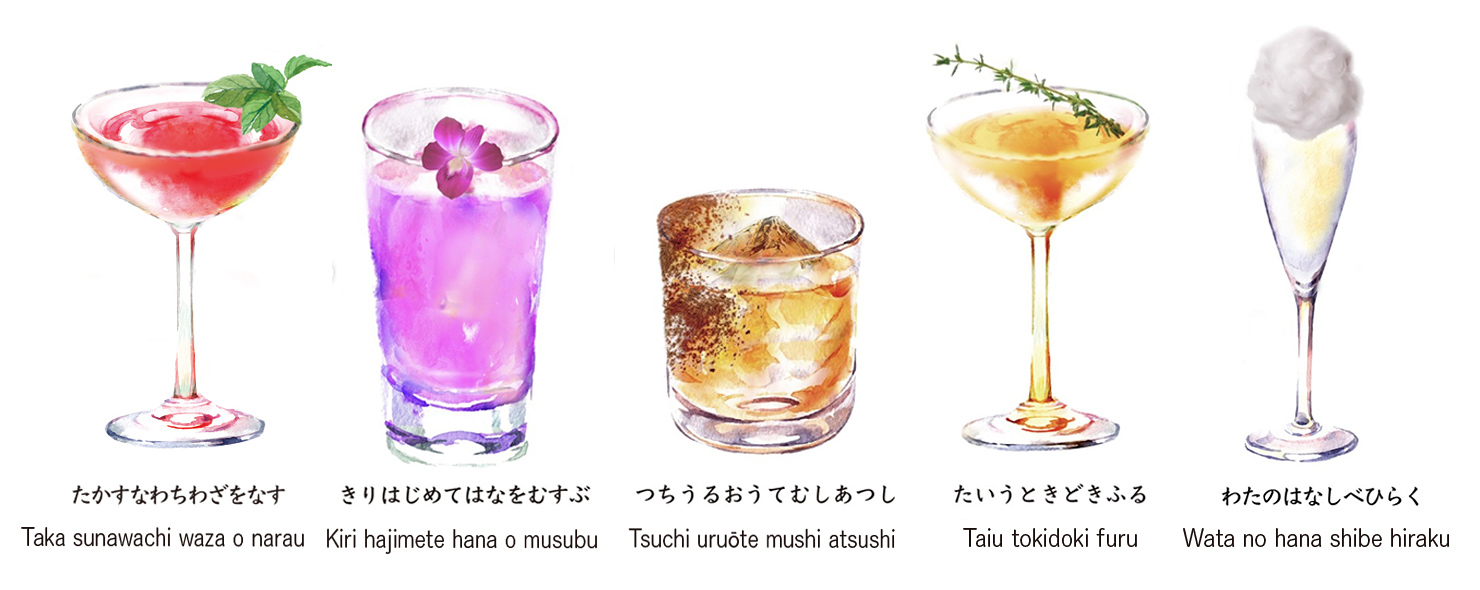July is "Fumizuki" by the lunar calendar; August is "Hazuki."
At SUIGIAN, we welcome you with cool and refreshing food and drinks that will make you forget the ground heat of summer.
For a limited time from July 20 (Thu) to August 31 (Thu), customers who have booked a course meal and come to the store wearing a yukata or summer kimono will be given their choice of one of our seasonal cocktail specials, "24 seasons and 72 microseasons Cocktail."
At SUIGIAN, a hidden retreat for adults, spend a cool summer moment with your loved ones while experiencing Japanese culture and traditional performing arts.
"24 seasons & 72 microseasons Cocktail" special
| Offer period |
: |
7/20 (Thu) – 8/31 (Thu) |
| Requirements |
: |
Book a course meal and come wearing a Yukata or Summer kimono |
| Offer details |
: |
Choose one from between our "24 seasons & 72 microseasons Cocktail" |
24 seasons and 72 microseasons
Shōsho (Lesser heat)
last climate: Taka sunawachi waza o narau
(Hawks learn to fly)
July 18–22
Taisho (Greater heat)
first climate: Kiri hajimete hana o musubu
(Paulownia trees produce seeds)
July 23–27
second climate: Tsuchi uruōte mushi atsushi
(Earth is damp, air is humid)
July 28–August 1
last climate: Taiu tokidoki furu
(Great rains sometimes fall)
August 2–7
Risshū (Beginning of autumn)
first climate: Suzukaze itaru
(Cool winds blow)
August 8–12
second climate: Higurashi naku
(Evening cicadas sing)
August 13–17
last climate: Fukaki kiri matō
(Thick fog descends)
August 18–22
Shosho (Manageable heat)
first climate: Wata no hana shibe hiraku
(Cotton flowers bloom)
August 23–27
second climate: Tenchi hajimete samushi
(Heat starts to die down)
August 28–September 2
[ The 24 seasons and 72 micro-seasons ]
Now four seasons are standard, but in ancient Japan the spring, summer, fall and winter were divided into 24 seasons, and each of those 24 seasons was further divided into 3 smaller seasons of 5 days each, called the 72 micro-seasons.
This helped people sense the changing seasons.


